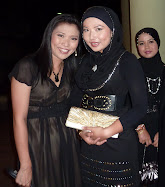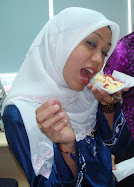
One of the more interesting quirks of Malay culture is that they are capable of dissociative behaviour in that there is a separation of the body and behavior from the will, separation of thought from appearance and, in body movements, of part from the whole. Child-rearing practices may promote this dissociation:
(Photo: Colleague with child.)
“Mothers throughout the region encourage passive molding of the child’s body to their own, and proceed from this to a manipulation of the child’s body as if it were an extension of their own. In part this may be due to the cultural demand that the small child make certain religious [Islamic] and social gestures [Malays’ high attention to protocol and ceremony] long before he is able to understand what he is doing. Whatever the reason, the result is that the child learns many body movements passively and in a dissociated fashion. … Under such a system of learning, one can only learn if one is completely relaxed and if will and consciousness as we understand those terms are almost in abeyance.” (Murphy, 1976)
“Moreover, among Malays such [trance] states are traditionally learned early. They are (or were) manifest in the form of certain children’s games noted by colonial scholars in certain periods. One of those described by R.J. Wilkinson was main hantu musang (the polecat spirit game). One child was put into a trance by the other children. Then, possessed by the musang [polecat spirit], this child would proceed to climb trees and leap from branch to branch like a polecat.” (Winzeler, 1995)
One common form of dissociative behavior is latah, a nervous affection characterized by an exaggerated physical response to being startled, the subject involuntarily uttering a cry [often vulgar speech and swearing] or executing movements in response to command or in imitation of what they hear or see in others.
One of my Malay colleagues has indicated to me that she is latah and I have observed, and unknowingly triggered in her, this behavior, albeit a very mild response. There are several theories as to why Malays, especially women, are prone to latah, but all involve some degree of the dissociation described above.
Another less common expression is amok, a condition whereby an affected person goes on a murderous rampage through a village without being aware of his actions. From amok we English-speakers derived our expression to “run amuck”. There are probably three or four cases of amok reported in the newspapers each year.
--------------------------------------------------------------------------------------
Murphy, HBM, 1976, Notes for a theory on Latah, In Culture-Bound Syndromes, Ethnopsychiatry, and Alternate Therapies, The University Press of Hawaii, pp. 3-21.
Winzeler, RL, 1995, Latah in Southeast Asia, Cambridge University Press, 172 pp.
--------------------------------------------------------------------------------------
I tried to find an example of latah on youtube, and the following video is probably the best available. Typically, latah is manifested by older women. When you see younger people melatah (to be latah), they are joking around and pretending. As you will see, Malays like to tease people who are latah.






No comments:
Post a Comment